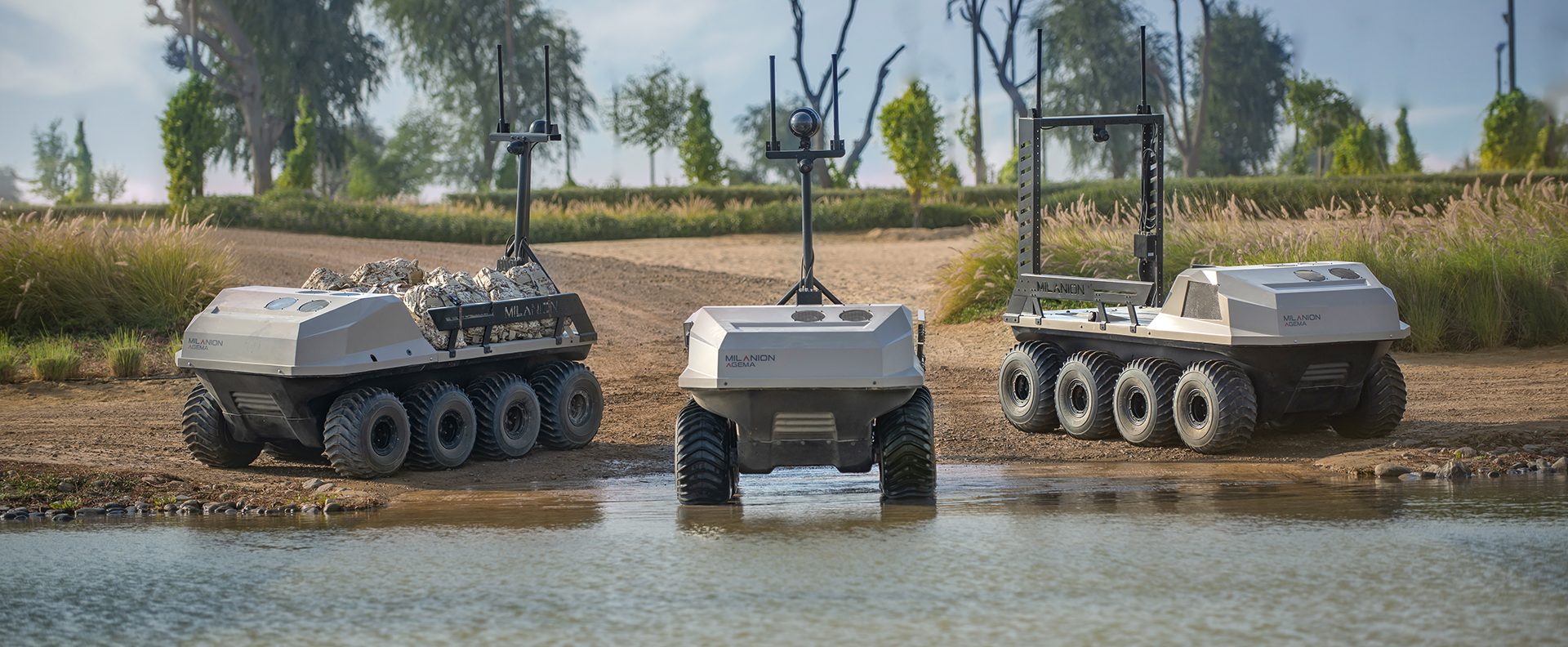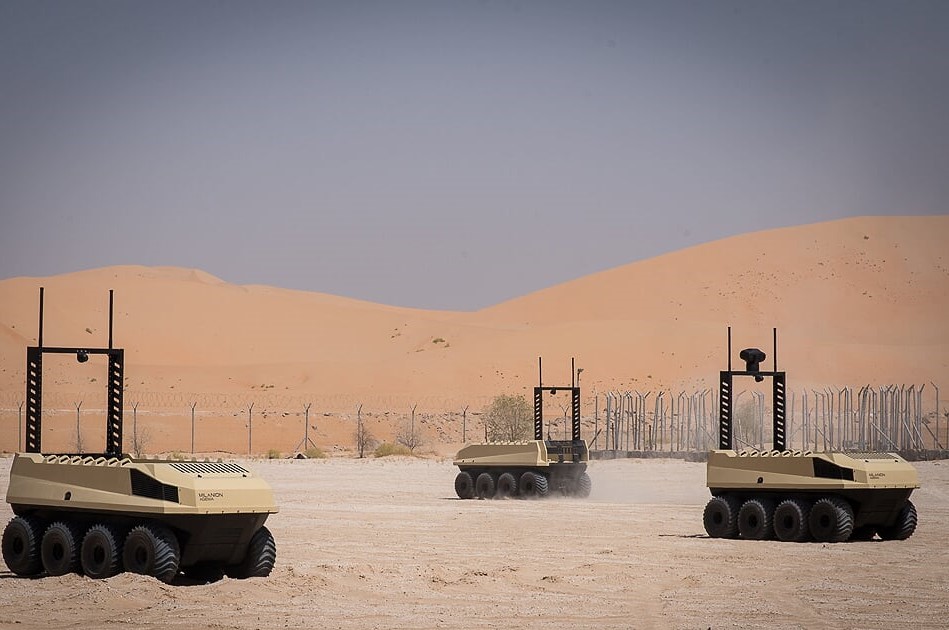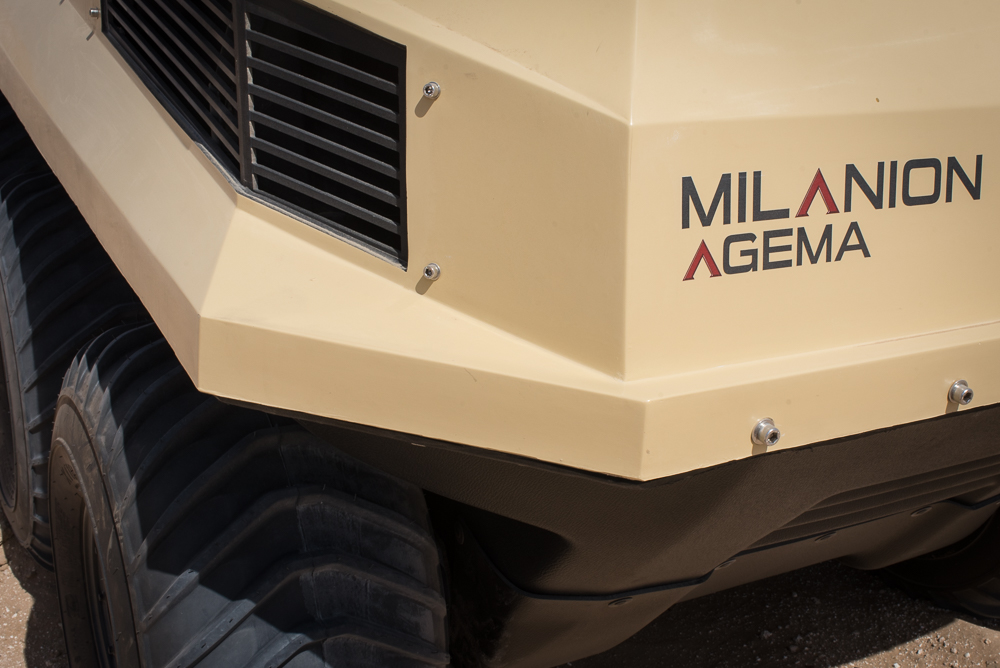

If ever there was an example of why defence forces are in a rush to develop their autonomous ground vehicle capabilities, it is in the dynamics of the recent conflict between Armenia and Azerbaijan over the disputed region of Nagorno Karabakh.
Whatever the politics of the dispute, the 2020 war between the two sides was (1). In just a few short weeks (27th of September to 10th of November) the war claimed the lives of thousands of soldiers on both sides and witnessed the destruction of combat material at a rate not seen since the 1991 Iraq War.
But the real story here is that the use of technology, particularly by Azerbaijan forces, highlighted the vulnerability of troops operating in numbers in armoured vehicles where, previously, they could have expected better protection.
Simply put, with drones dominating the battlefield and relaying live video with target acquisition and fire mission software plugged into smart weapons and support artillery; being in the open (even in the rear in protected vehicles) had ceased to be safe (2). The loss of this norm quickly resulted in forces having to operate from trenches, in a strange warfare composition of the very old and the very new. “Azerbaijani drones, having successfully targeted armour, artillery, air defence and tanks, quickly turned its attention to units of soldiers”.
The Azerbaijan ground offence, when it started, moved its armoured units supported by drones and loitering munitions and pushed the Armenian forces back from their first line of defences. However, once the Armenian forces were entrenched, they in turn managed to inflict significant damage to Azerbaijan vehicles and armour through their own use of laser guided anti-tank munitions. This created a phase of the conflict where both sides were restricted to exchanges of fire from heavily defended positions. “Any attempt to exploit openings by the Armenian’s was punished by Azerbaijani attack drones, loitering ammunition and reconnaissance drones spotting for artillery” (4).
In his August 2020 summary to the US ARMY website (7), David Millar’s Future of Unmanned Ground Systems in the Operational Environment notes; “All countries are working on three major research areas to improve the effectiveness of robotic ground systems; Mobility in complex terrain, communication in a contested spectrum, the ability to collaborate and coordinate with humans in the loop ”. Yet, despite efforts such as the 5-year THeMis programme, “These systems have not delivered a game changing
capability”.
It goes on to note, “The UGV is designed to perform a wide range of military missions in dangerous or hard-to-reach areas. It offers enhanced safety and operational effectiveness by keeping war fighters at a safe distance from enemy attack. The vehicle can be configured for different roles, including reconnaissance, observation, target acquisition, communications relay, logistics support platform, rescue, fire-fighting, and medical evacuation (medevac)” (7). These are all logical operational requirements, and since “During various live military exercises, the UGV has been deployed by the British Army, U.S. Marines, the Royal Dutch Army, Latvian, and Estonian Defence Forces” (7); why then are these programmes slated to continue for the next 2-4 years? Why are UGV’s not being procured in numbers where they can be deployed to meet these new battlefield realities. Only the US seems to be doing this (8).
A plausible reason for this is the UK and Europe’s disconnect between what is technically available now and what they hope might be available in the future. But if they are pinning their hopes on military programmes creating vehicles that are carbon copies of Alphabet’s Waymo, General Motors Cruise or Fords Argo AI, this strategy is flawed (9). These programmes are the recipient of billions of dollars of investment; they have been ongoing for years, and we are still no closer to seeing them on the high street. In the defence development sector, “requirement outpaces what current autonomous cars are capable of” (7). This is further exacerbated by the perceived need to have UGV’s with AI machine learning and for them to be plugged into complex command and control systems. This may well happen, 10-20 years down the road (look at the development of UAV’s). But, as the lessons of Nagorno Karabakh have ably demonstrated, armoured and manned vehicles sent into a tech combat environment is going to result in high and unsustainable losses in men and equipment. If what is available now can do anything to “offer enhanced safety and operational effectiveness by keeping war fighters at a safe distance from enemy attack” (7), then why has there not been a frenzy of procurement?
At Milanion Technologies Group, the company has been quietly building their AGEMA Class series of Unmanned Ground Vehicles and delivering them to generals who want their forces using them now, not in 5 or 10 years.
The AGEMA platform ticks all the boxes when it comes to the missions and tasks that are envisaged necessary and critical for UGV’s. The vehicle is modular – it can accept a multitude of payloads, from Remote Weapons Stations and ground penetrating radar for route clearance operations; to the ability to remotely operate masts that carry C-UAV, ISR & MESH Communications payload systems. The vehicle can be deployed using a variety of communications links, demonstrating flexibility. The vehicle can be provided with a number of different power train options. The operating system is proven, in use, IP protected, certified and patented. These factors alone should make the AGEMA worth considering. But there is a myopia affecting many of these programme managers when it comes to considering companies that might not be connected to the traditional defence conglomerates. And this is an error.
Companies like Milanion Technologies Group have purposely resisted being acquired by the bigger kids on the block. But what they have done to legitimise their technology is to adopt a strategy that has been successful in winning them credibility with end users. This strategy has been to ensure the AGEMA Class UGV is completely agnostic when it comes to sensors, payloads, communications and command and control options. This has enabled end users to optimise existing procurement decisions and programmes, has reduced the requirement for training and service support; and has kept costs down. The AGEMA is approximately a third of the cost of some of its competitors. It has the same (or sometimes better) functions and capability. It has collision avoidance that is more than adequate for a battlefield environment. It has a follow me function that allows it to lead (personnel and vehicles) and/or to be led. It has 256-bit encryption and has a team of engineers who are constantly improving and updating the platform technically, without holding up delivery programmes and without driving up costs. The AGEMA has demonstrated it can be deployed up to 10km from its ground control station and then remotely fire a 30mm cannon. From a distance of 10km away from the ground control station, the AGEMA can deploy area denial munitions and sophisticated ATGM that can reach out and touch enemy material a further 8km away. This is the truest demonstration of keeping soldiers at arm’s length away from danger and risk.
In many ways, the AGEMA UGV is operationally superior to many of its cousins and much more. By having adopted such a flexible and adaptable architecture, the end user can ensure the UGV is interoperable with its existing C2, C3 & C4i networks and its arsenal of weapons. Milanion has collaborated with some of the autonomous and defence industries innovators and leaders; these include Domo Tactical Communications, Singapore Technics Engineering, EOS, FLIR, Marakeb Technologies & Tawazun Industrial. The strategy and success has brought Milanion and the AGEMA to the attention of programme and procurement managers. But can these unwieldy, costly, and bureaucratic programmes adapt to allow the fast tracking of innovation that does not have to be “perfect” to work? Well, the UK’s Defence Minister says yes.
Many NATO defence chiefs are struggling with the problems of the decline in the relevance of its tank and armoured fighting vehicles and the need to fight in asymmetrical combat environments whilst keeping one eye on the need to be ready to fight a peer-on-peer enemy. Tanks and AFV’s will struggle to survive on a battlefield dominated by reconnaissance drones and loitering munitions, this is clear from the carnage in Nagorno Karabakh. Defence chiefs want to reduce their heavy lift capability but need to be able to move mobile, effective combat units quickly. UGV’s have the capability to tick so many of those requirement boxes.
On the 11th of December, the UK Defence Secretary Ben Wallace gave a speech to announce the UK Governments £18b increase on defence spending. Though this will be welcome to defence chiefs, Wallace sounded a note of caution to programme managers. “Some tough choices will still have to be made. But those choices will allow us to invest in new domains, new equipment and new ways of working…Sometimes it will mean quality over quantity or the good rather than the perfect. Or simply letting go of some capabilities. Too often we cling to sentimentality when we need to explore alternatives,” (10). These sentiments had been echoed earlier in the same week by Britain’s permanent secretary for the Ministry of Defence, with Sir Stephen Lovegrove indicating that “the MOD would have to cut legacy programmes if it wanted to pivot to more relevant capability in cyber, space, underwater, unmanned and other high-tech sectors” (10).
Milanion’s AGEMA Class UGV certainly fits the description of good rather than perfect. It is not a machine learning operating system, but neither is anything else out there right now that can compete with it. But it is less costly and it is available now. It is capable of conducting many of the missions required to keep personnel an arms length away from danger. And it can counter any imbalance of numbers.
Milanion has been invited to participate in the UK’s THESEUS programme which will focus on UGV’s delivering stores and equipment from an FOB to forward combat elements. It is their first invitation to any such programme. Let us hope the programme managers are able to change their previous intransigence to real technological change, that they understand that “good, does not have to be perfect” and that they recognise the deficiencies in their capability can be filled now, not in 10 years’ time.




Fill in your details.